
Biopsy Simulation
Students conduct a model biopsy and lumpectomy and understand the criteria surgeons use to determine if they will perform a biopsy or lumpectomy on a patient.

Sheep Brain Dissection
Students dissect a sheep brain to observe the various lobes, grey and white matter, optic chasm and cerebellum among other anatomical structures. Students practice sagittal, axial and traverse cuts.

Final Patient
Students are presented with a hypothetical patient who has endured a traumatic accident and are called to diagnose and treat their patient based on the knowledge and experience they have obtained.
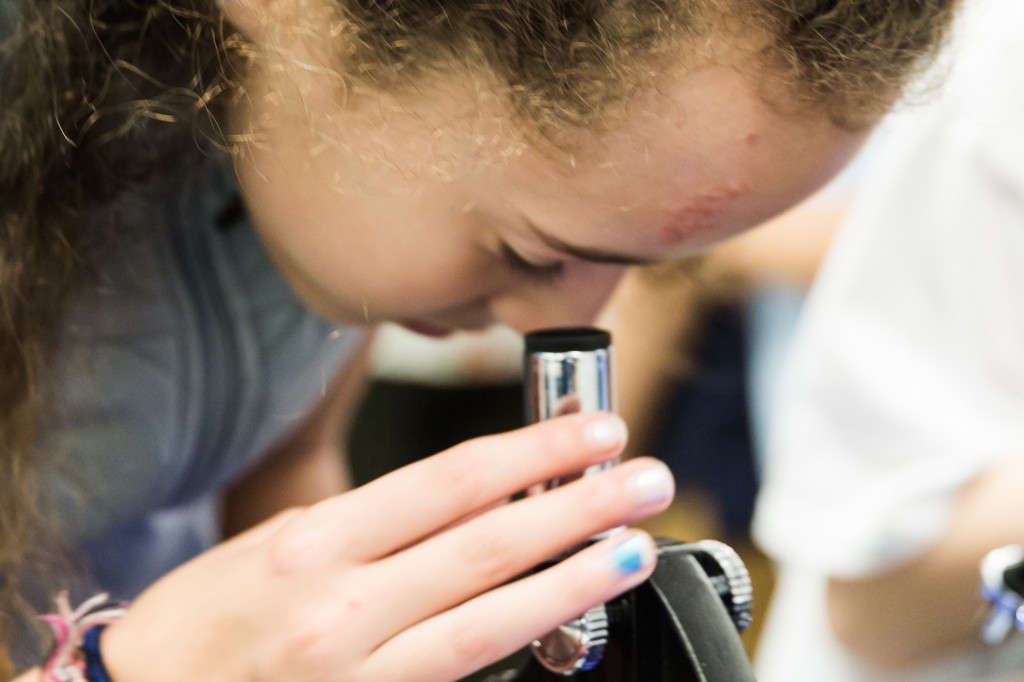
Fingerprint Analysis
Students learn that fingerprints are even more unique than DNA and use the Fingerprint Powder Method to dust for prints in a mock crime scene and analyze them to identify potential suspects.
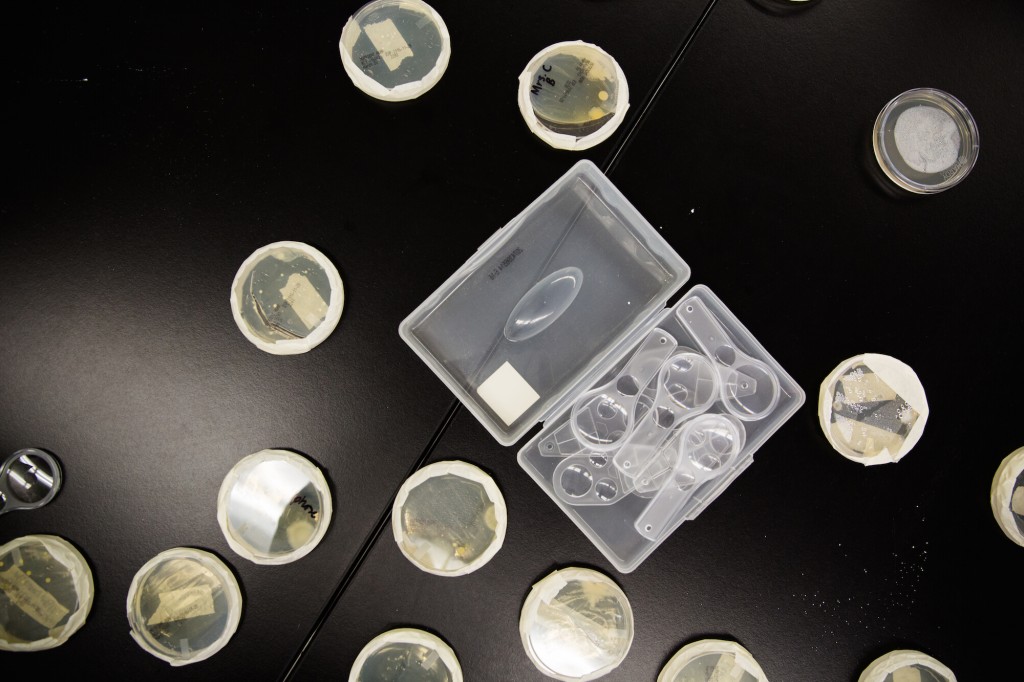
Ink Chromatography
Students use paper chromatography to separate ink found at the crime scene into components based on solubility and then compare results to the composition of known ink.
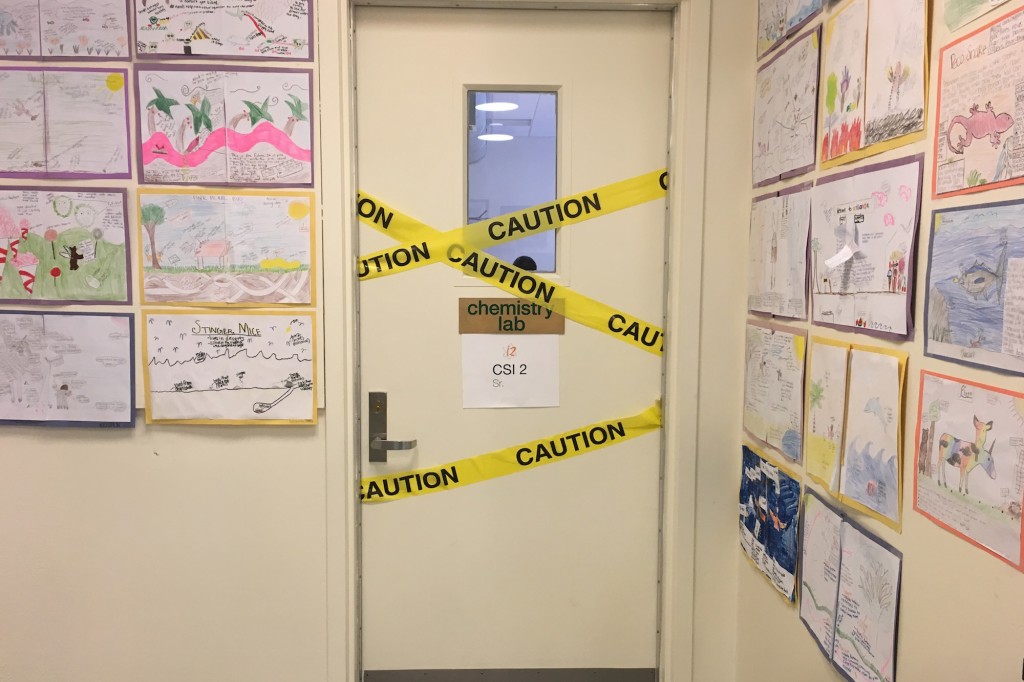
Crime Scene
In the final activity, students practice all the forensic techniques they have learned during the week to analyze a mock crime scene. Students collect and examine trace evidence including glass, hair and fibers and collect prints.

The Lilypad Arduino
Students practice hooking up their Lilypad to the computer and program their LED to blink using Arduino software. Students observe how a change in code can alter the output of their hardware.

Experiment with LED Patterns
Students learn how to use statements and create LED blinking patterns using these statements.

Design Your Monster
Students design the circuit and code for their interactive monster.

The Dark Side of the Moon
Students consider scale when developing models of the Earth and moon that properly represent their mass and size. Students use their models to simulate the movement of the Earth and moon and the sun to determine if there is “dark side” of the moon.

Gravity on the Earth and Moon
Students model how celestial objects with different masses move with respect to each other. At the end of this activity, students conclude that objects with greater mass have a stronger gravitational pull and objects with less mass orbit objects with greater mass.

Atmosphere on the Moon
Students explore the environmental differences between the Earth and moon and hypothesize how the lack of atmosphere would impact humans on the moon. Then, students use the engineering process to design a protective suit for a marshmallow.

Getting Started with Scratch
Students will learn Scratch basics, including: how to animate a character, making a chase game, and conditional statements.

Paper Prototyping
Students will develop a storyboard for their Scratch project on paper to detail and sketch all of the elements and components that will be included in their game.
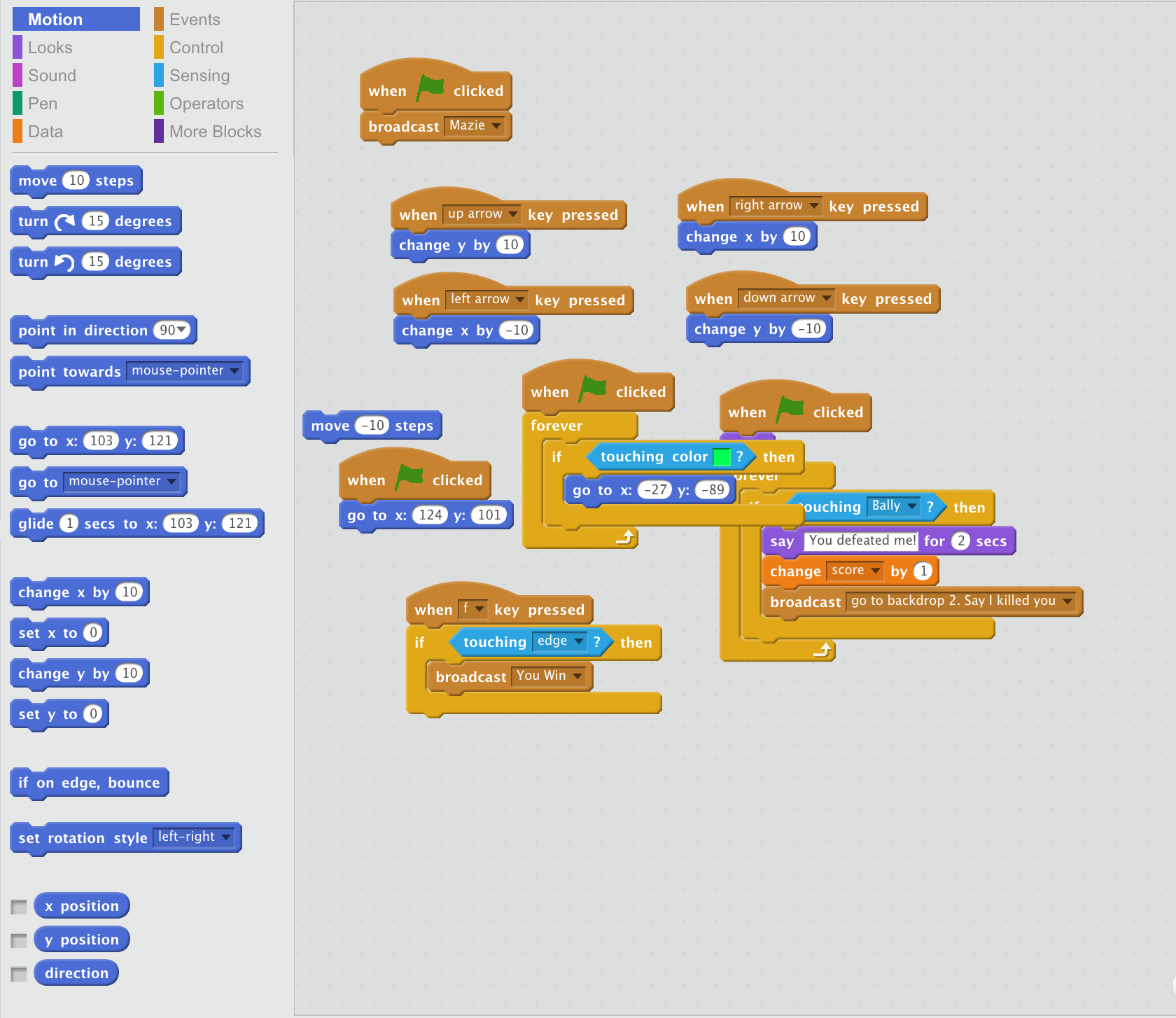
Scratch-based Debugging
Students will learn strategies for debugging and troubleshooting within Scratch.

Water Quality Testing
Students analyze water samples for multiple characteristics: pH, temperature, dissolved oxygen, turbidity, and chemical contamination.

Engineer a Filter Feeder
Students learn about the role of filter feeders in an ecosystem and design their own “filter feeder.”

Catching the Zebra Mussels
Students engineer a device to collect zebra mussels from Loon Lake and then modify it to eliminate bycatch.
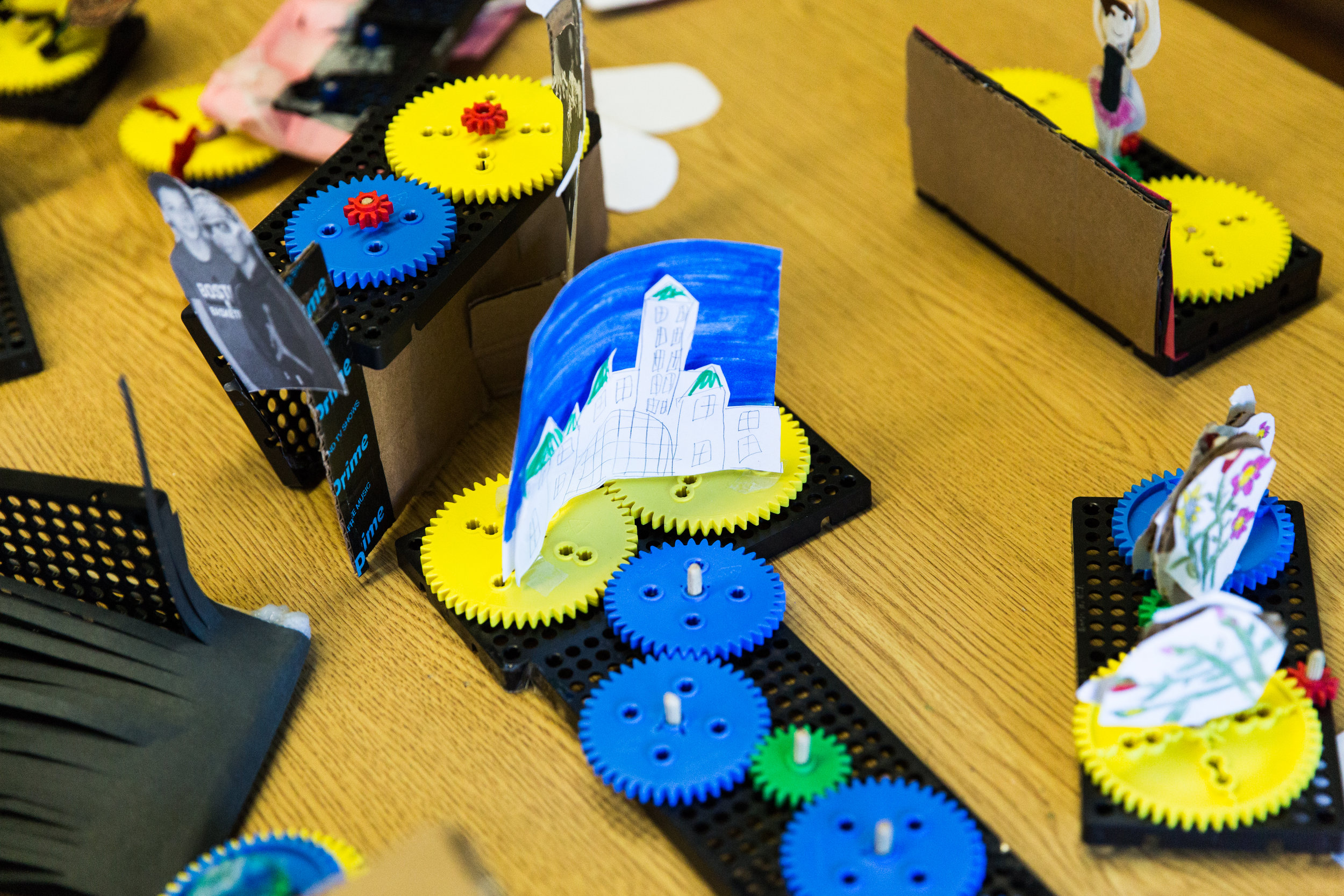
Engineering Automata
Students use cams and gears to build an automaton that represents a human or animal that moves as a result of their design. In this activity students explore how gears change force, speed and direction.

Marble Run
Students explore the conservation of energy and construct a marble run to demonstrate how potential energy can be transformed into kinetic energy.

Mastering Mobiles
Students are introduced to the work of Alexander Calder to learn about complex mobiles. Then, students apply the principles of balance they explore in the course to build their own mobile.

Primary Colors in a Digital Image
Students explore the three colors – red, blue and green – that compose all other colors and use MATLAB to create their own colors by adjusting the magnitude of each primary color.

Connecting and Indexing Vectors and Matrices
Students represent pixels in MATLAB using vectors and matrices making them easier to manipulate using a programming language.

Apply Custom Masks on Images
Using MATLAB, students develop algorithms that allow them to place a custom mask on an image of their choice. Furthermore, students practice applying a mask on an image using face detection technology.

Navigating the Line
Students explore various sensors and mechanical topics, such as simple machines, gears, levers and rotational and linear motion. They apply their knowledge to program a robot to follow a line using light sensors.

Mountain Climber Bot
Students design and test robots designed to traverse a steep incline. They are challenged to build a strong gear system to power the robots up a hill.

Sumo Bots
In the culminating activity for the course, students build and program robots to be “sumobots.” The final activity is a sumo challenge where the goal is for one robot to push another out of a 24″ ring.

Designing an Irrigation System
Students design an irrigation system that effectively and efficiently waters the plants in their urban farms. Students consider the use of rain and providing the right amount of water to each plant.

The Importance of Light
Students investigate different light sources available for their urban farm and conclude which light source is best for plant growth.

Food Waste
Students examine food waste in our country and consider ways to reduce it. Students collect and compost their own food waste throughout the week and explore the environmental benefits of composting.

Building A Model Lunar Colony
Students consider ratios when developing models of the Earth and moon that properly represent their mass, size and distance. Then, students sketch on graph paper a scaled blueprint of their model colony. At the end of the month, students build a 3-D model of their colony that accommodates the number and size of buildings they will need to survive on the moon.
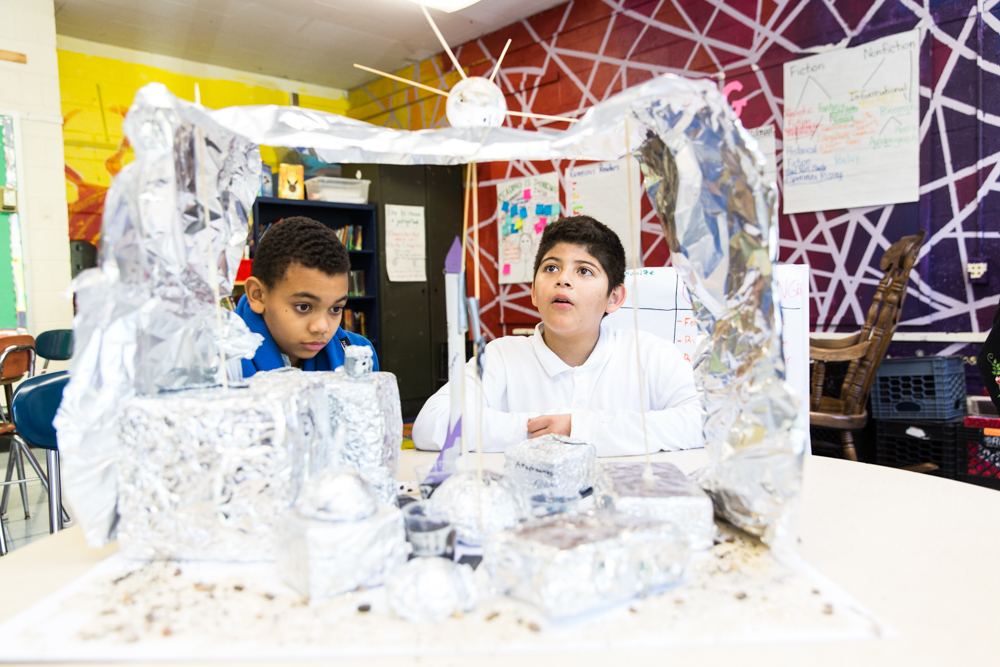
Collection of Science Fiction Stories
Throughout the month, students read a range of short stories that helps students consider the needs humans may have on the moon: recreation, entertainment and government. By the end of the month, students write their own science fiction stories that take place on the moon.

Designing a Lunar Menu
Students develop a menu for daily meals on the moon that considers nutritional balance and sustainability on the moon. Students use their school’s lunch menu to estimate the ratios of proteins, fats, and carbs consumed during the meal. They mathematically compare the nutrient intake from their school’s lunch to the USDA’s recommendations and modify the lunch menus accordingly for a healthy diet on the moon. Students continue to adjust their menus as they discover how much square footage would be required to support their meal plans and how much waste would be created.

Governing Document
Students study common forms of government found in ancient civilizations such as monarchy, oligarchy, republic, democracy, and tyranny, among others. The in a debate, students consider the pros and cons of these forms of government as potential forms of government for their lunar colonies. The month culminates with students writing a document that outlines the government they have decided for their lunar colony.
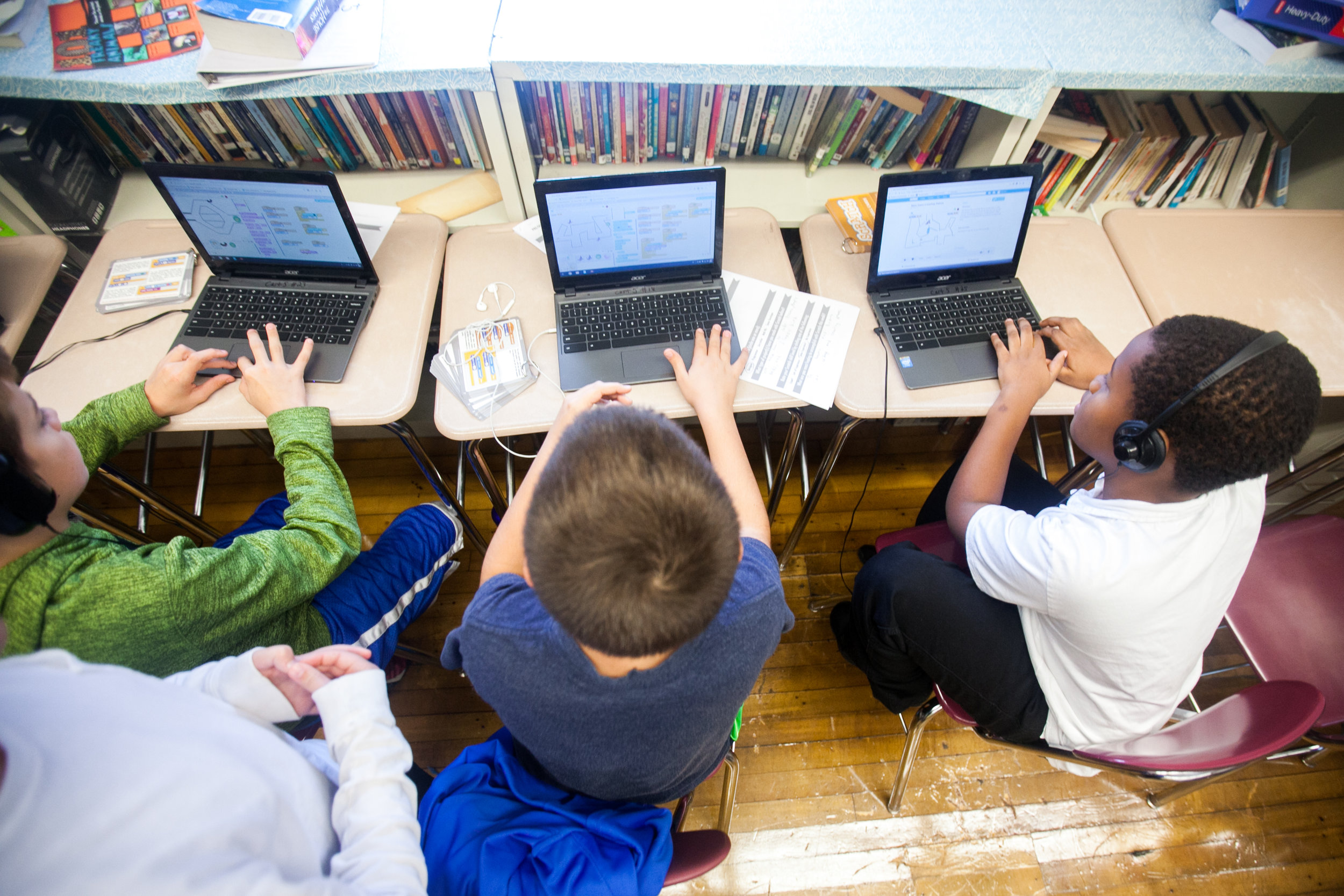
DATA COLLECTION
Use MATLAB Mobile to acquire data (latitude, longitude, speed, and altitude) from a physical activity (run, walk etc.).
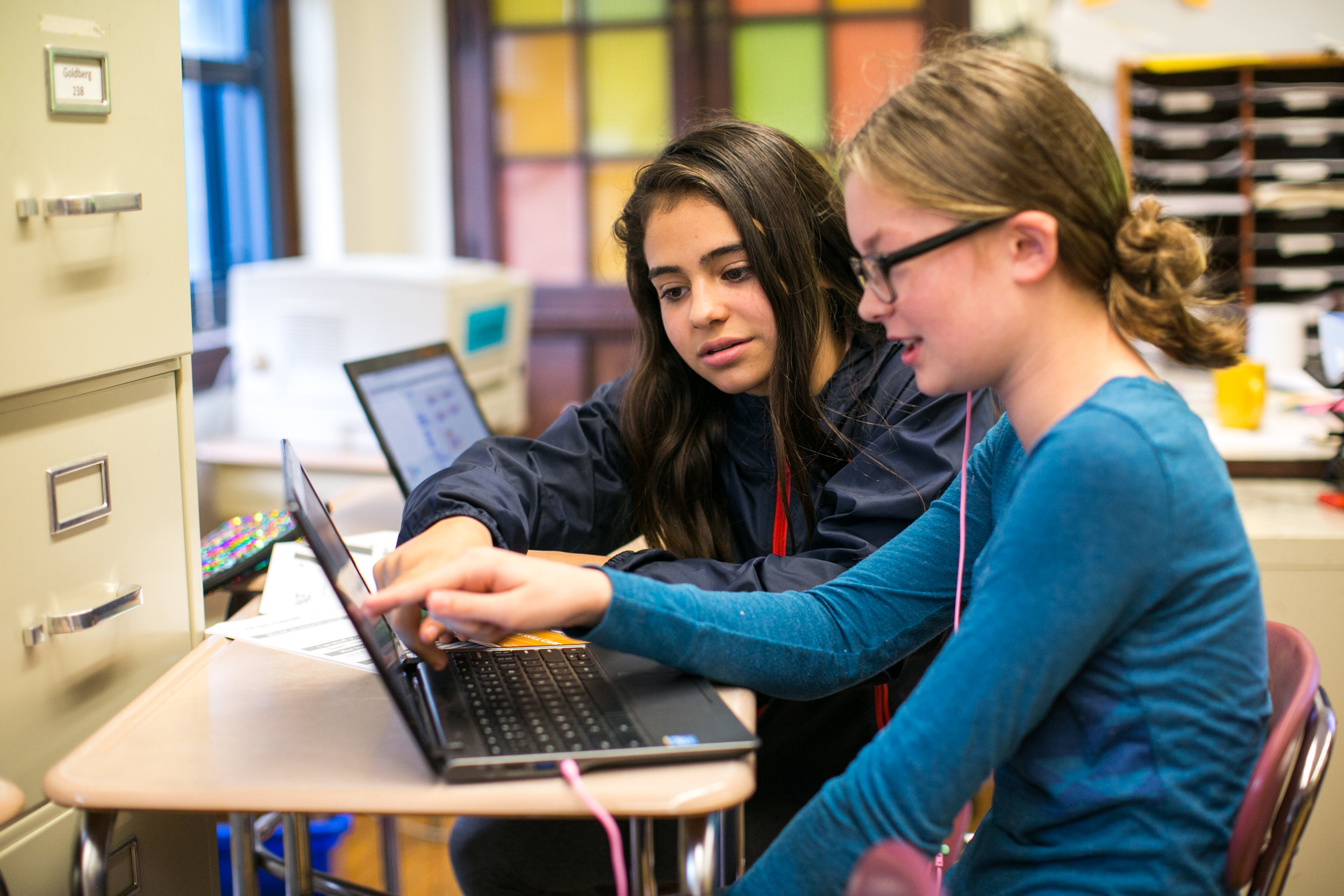
DATA MODELING
Model an estimate of calories burnt from the data collected.
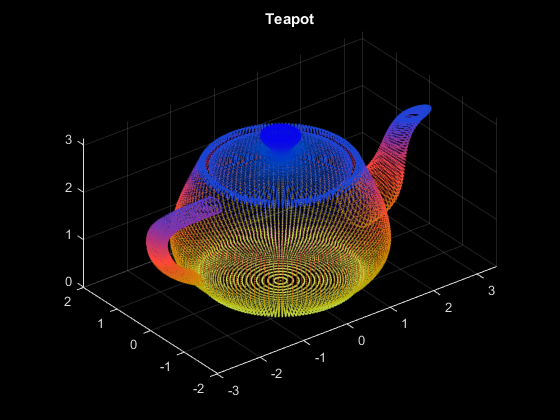
PROCESSING AND VISUALIZATION
Import data into MATLAB Online for processing and visualization.
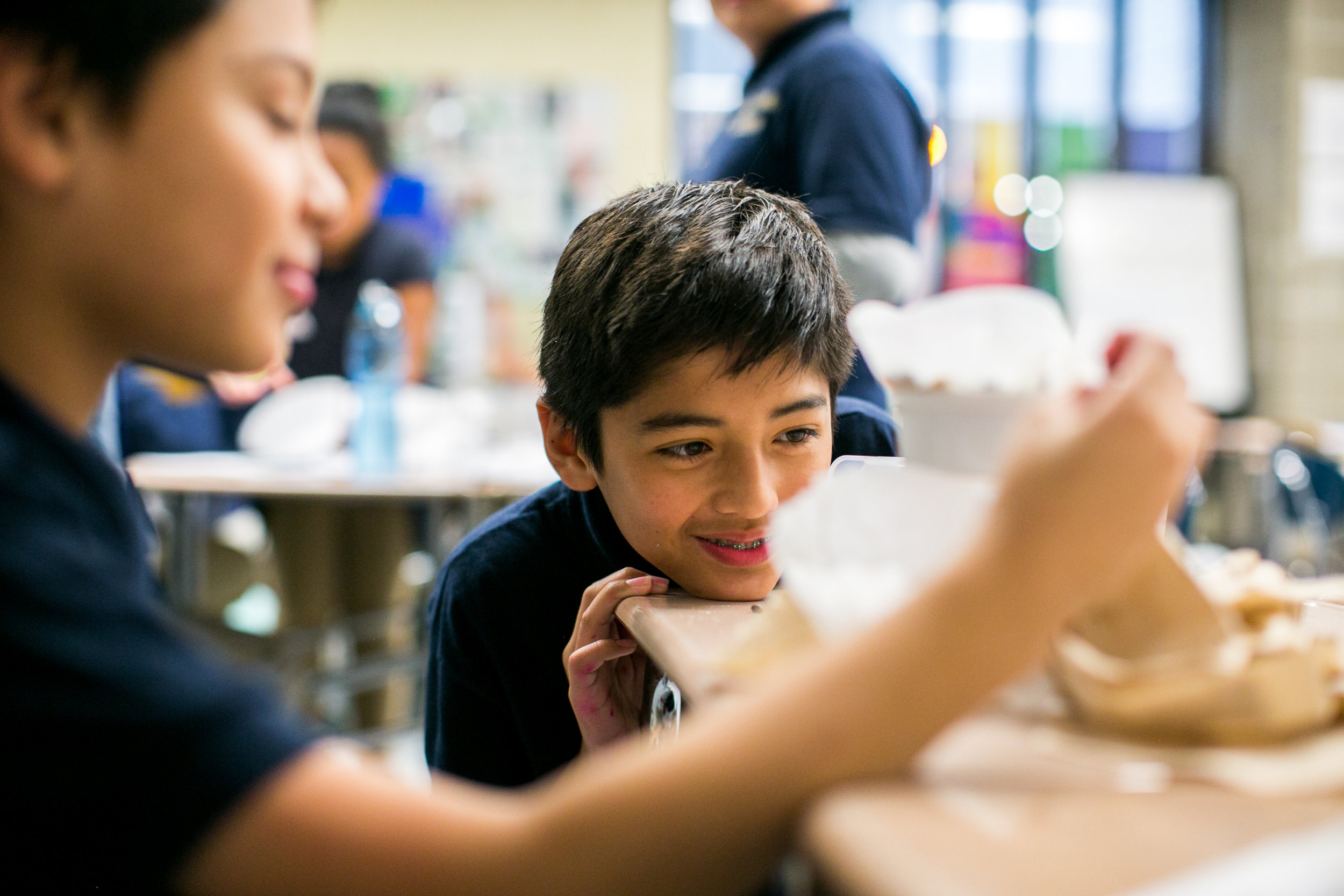
RESEARCHING
Research scientific models of calories burnt for creating a unique fitness tracker.
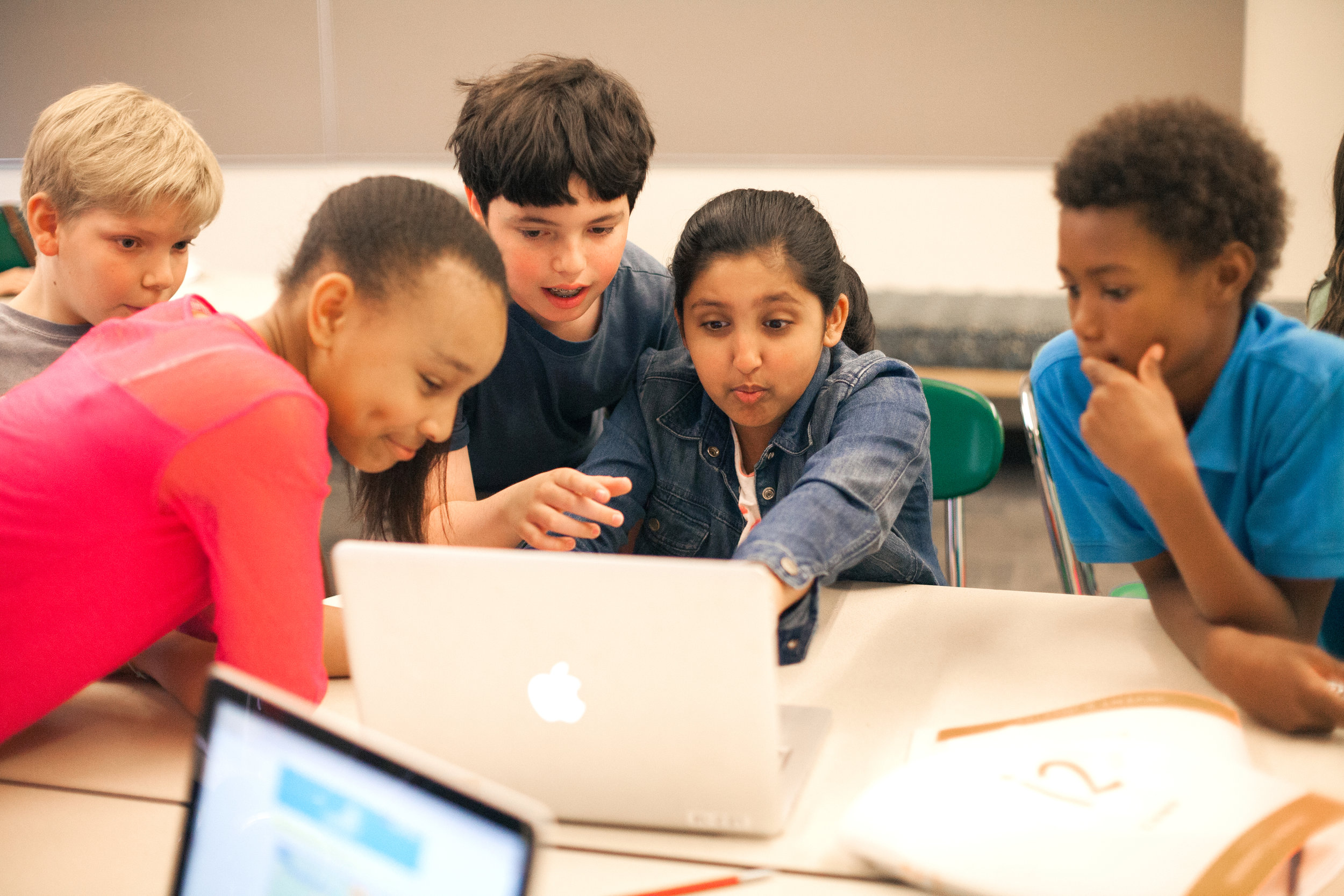
PRESENTATION
Present findings through a paper, program, and/or video.

COLLABORATION
Students work together as a team of engineers to complete one final product








































